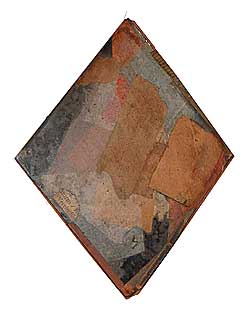- László Moholy-Nagy, Painting, Photography, Film
The Dadaists' graphic works demonstrated an interest in the relationship of letters and phonetic relations that struck "chords" outside the realm of the visual. Austrian avant-garde artist Raoul Hausmann (1886-1971) created graphic pieces that gave birth to phonetic poems. The variety of shapes and sizes of letters conveyed rhythmic implications for voice and even for gesture. In his performances, poetry was produced as sound, which he called "opto-phonetics." He wanted to reach beyond more sentimental arrangements of music and sound to explore the interactive modalities between audio and visual. Tone can be thought of as the musical analog of color. Like color, different tones consist of differing frequencies, in this case sound waves rather than electromagnetic waves. Simple tones can be combined to make more complex ones. Tone can be changed without altering the overall composition, but it can alter the mood of a piece.

Kurt Schwitters, Untitled
German painter Kurt Schwitters (1887-1948) worked on the correlation between the luminosity of whites and blacks, and the scales of music. He also compared intervals between notes of the scale and those separating colors, as had Sir Isaac Newton before him. Once mixed and composed, colors take on a relationship of complex chords. Since the birth of motion pictures, image and sound have been combined: first with a musical accompanist and later by running a strip of audiotape synchronized with the film.
Filmmakers have long realized that the expressive power of film can be amplified not only by the use of color but also through the addition of sound. Although dialog helps to further the plot and develop characters, it is often the soundtrack that conveys emotion.
We cannot imagine the future of cyber interaction without the integration of sound and color. The visual-effects generator—available with most computer programs—is capable of playing music that creates an abstract visual representation through shape, and particularly color, of the music it plays. While often slick and kitsch, it places the notion of the correlation between vision and motion (the title of another Moholy-Nagy book) in the minds of the young children who use it.
